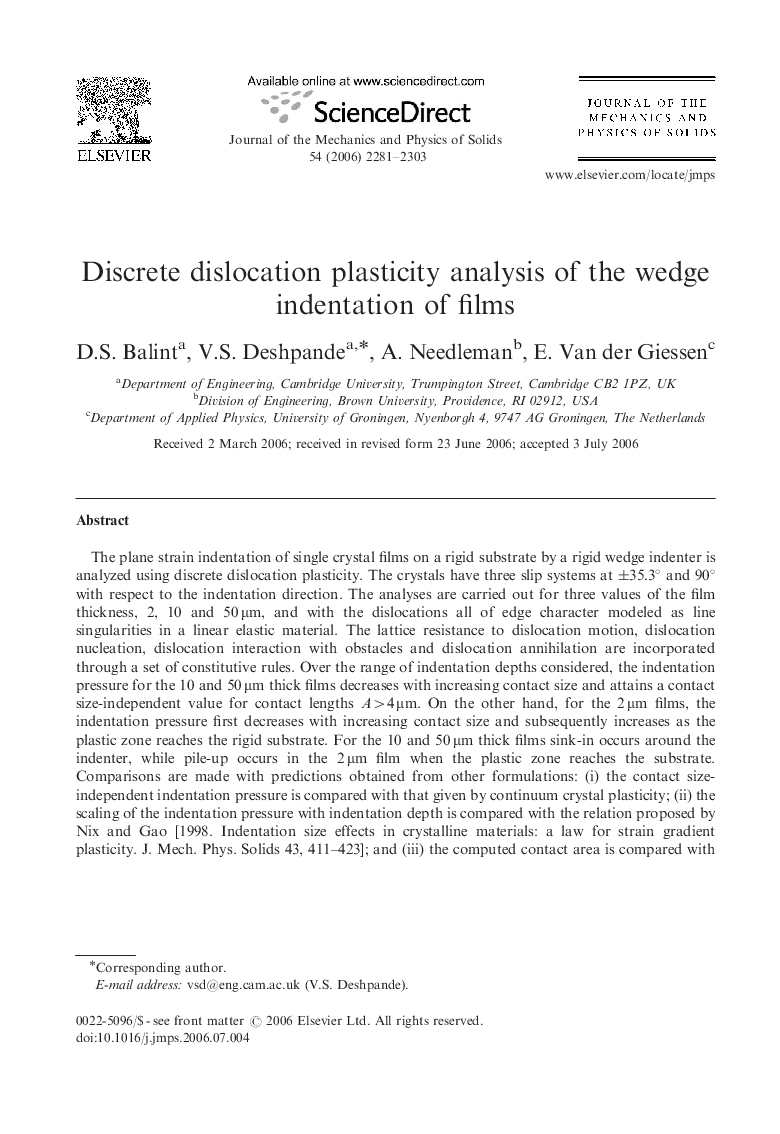| Article ID | Journal | Published Year | Pages | File Type |
|---|---|---|---|---|
| 800194 | Journal of the Mechanics and Physics of Solids | 2006 | 23 Pages |
The plane strain indentation of single crystal films on a rigid substrate by a rigid wedge indenter is analyzed using discrete dislocation plasticity. The crystals have three slip systems at ±35.3∘±35.3∘ and 90∘90∘ with respect to the indentation direction. The analyses are carried out for three values of the film thickness, 22, 1010 and 50μm, and with the dislocations all of edge character modeled as line singularities in a linear elastic material. The lattice resistance to dislocation motion, dislocation nucleation, dislocation interaction with obstacles and dislocation annihilation are incorporated through a set of constitutive rules. Over the range of indentation depths considered, the indentation pressure for the 1010 and 50μm thick films decreases with increasing contact size and attains a contact size-independent value for contact lengths A>4μm. On the other hand, for the 2μm films, the indentation pressure first decreases with increasing contact size and subsequently increases as the plastic zone reaches the rigid substrate. For the 1010 and 50μm thick films sink-in occurs around the indenter, while pile-up occurs in the 2μm film when the plastic zone reaches the substrate. Comparisons are made with predictions obtained from other formulations: (i) the contact size-independent indentation pressure is compared with that given by continuum crystal plasticity; (ii) the scaling of the indentation pressure with indentation depth is compared with the relation proposed by Nix and Gao [1998. Indentation size effects in crystalline materials: a law for strain gradient plasticity. J. Mech. Phys. Solids 43, 411–423]; and (iii) the computed contact area is compared with that obtained from the estimation procedure of Oliver and Pharr [1992. An improved technique for determining hardness and elastic-modulus using load and displacement sensing indentation experiments, J. Mater. Res. 7, 1564–1583].
